
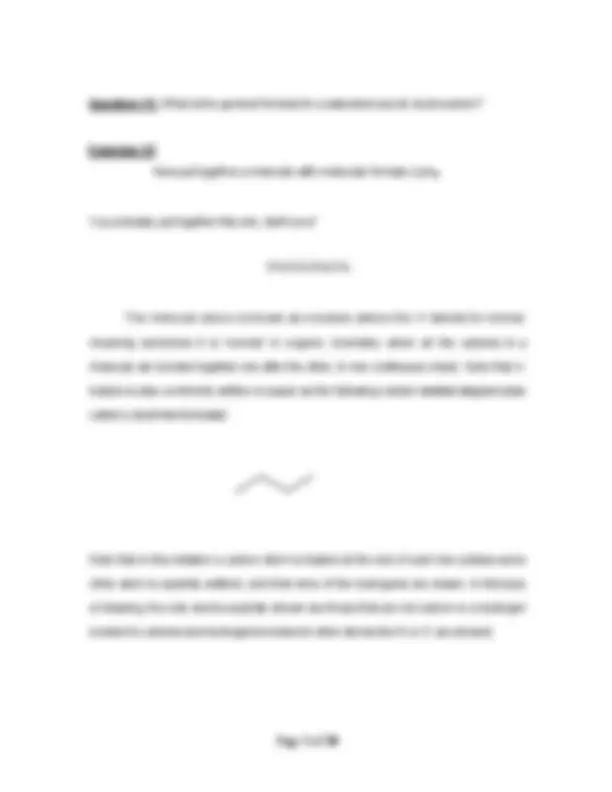
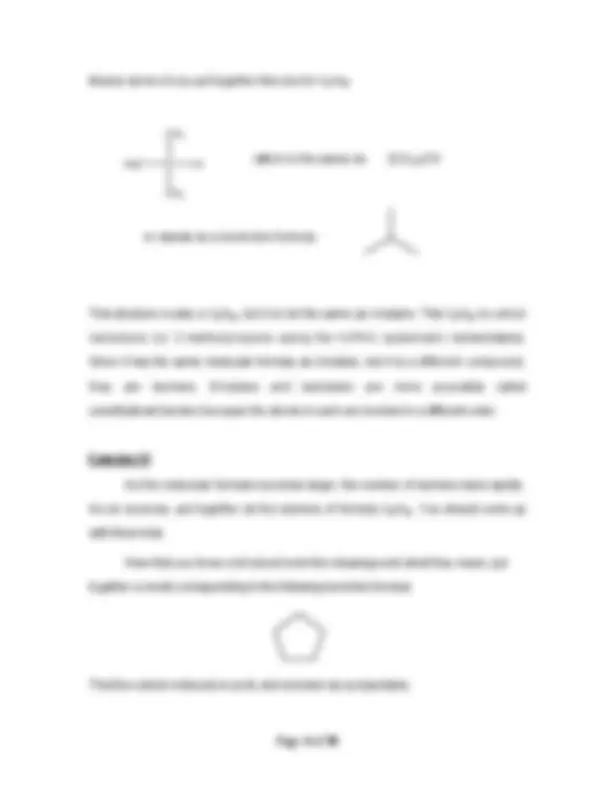
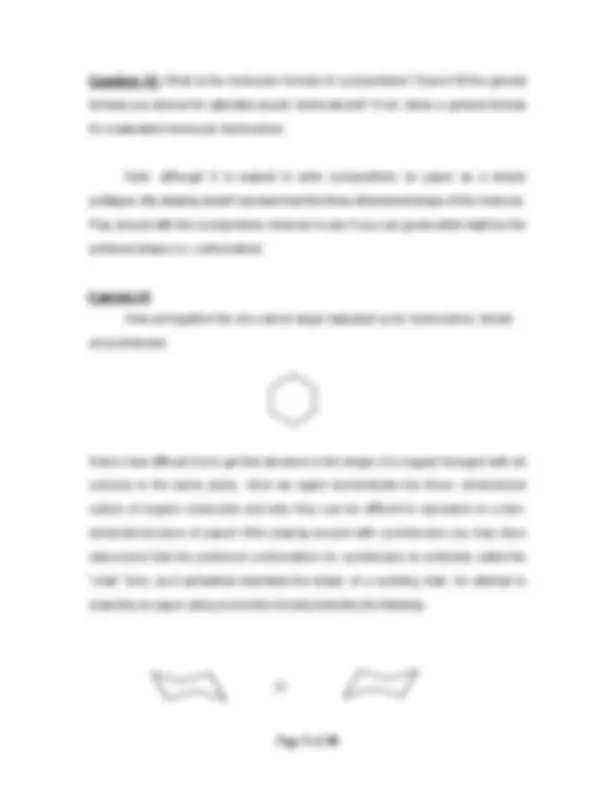
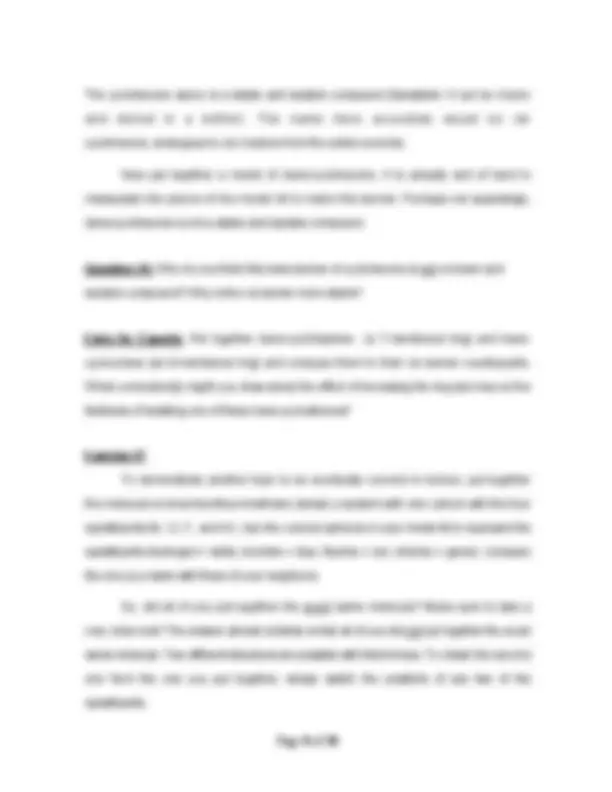
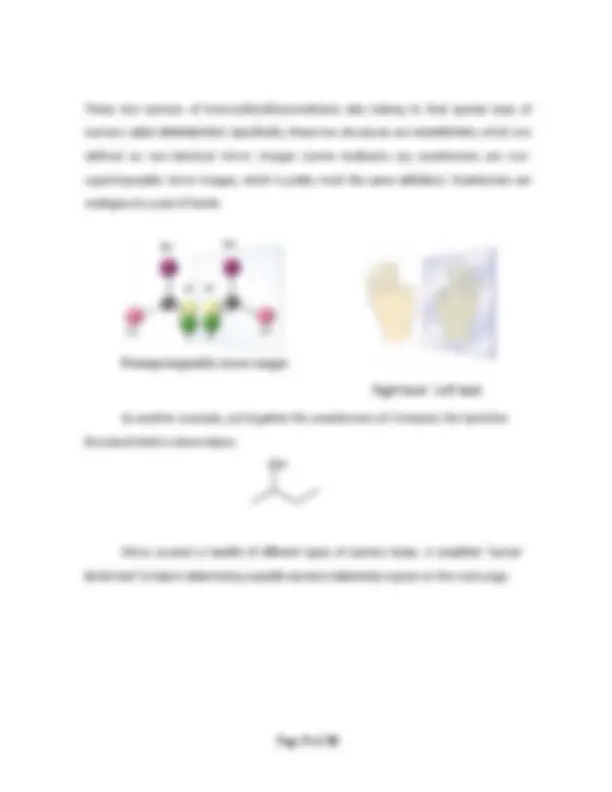
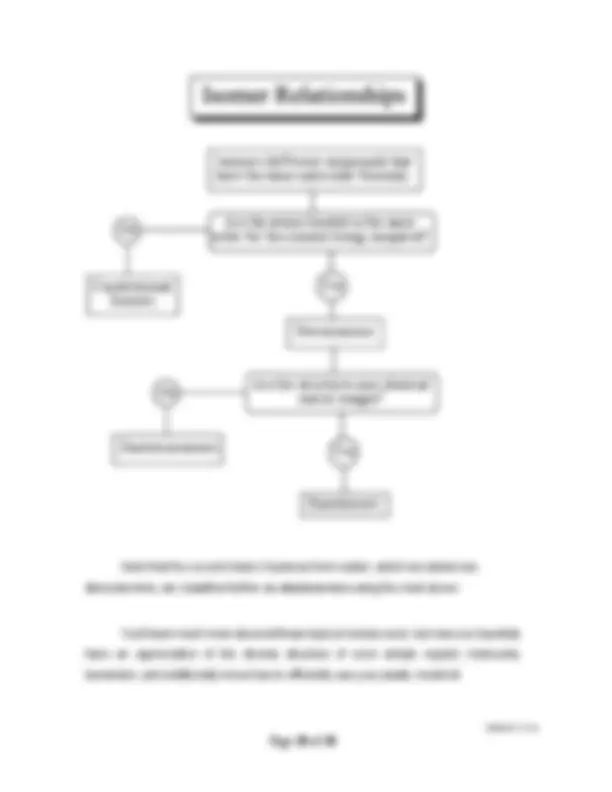


Study with the several resources on Docsity

Earn points by helping other students or get them with a premium plan


Prepare for your exams
Study with the several resources on Docsity

Earn points to download
Earn points by helping other students or get them with a premium plan
Community
Ask the community for help and clear up your study doubts
Discover the best universities in your country according to Docsity users
Free resources
Download our free guides on studying techniques, anxiety management strategies, and thesis advice from Docsity tutors
Material Type: Lab; Professor: Bausch; Class: Organic Chemistry Lab I; Subject: Chemistry; University: Villanova University; Term: Fall 2008;
Typology: Lab Reports
1 / 10

This page cannot be seen from the preview
Don't miss anything!







CHM! 2201! Fall! 2008 Department!of!Chemistry Organic!Chemistry Lab I Villanova University Week 4 – September 16 – 22, 2008
If you haven't already done so, buy a "Molecular Visions" molecular model kit from the stockroom. It is the kit that comes in the green plastic box.
Here is what we'll cover in today's lab:
1) The Common 2nd Row Element Presentations (pp 10-11 of the model kit manual)
With the help of your professor and TA's, together we are going to go through some of the contents of your kit. We will follow what is on pages 10- of the manual that came with your kit.
Note: try to learn which pieces are needed to make organic compounds; also note how to put all the pieces back in the box as it is a tight fit and every piece has a particular place!
2) Assembly and Disassembly of Atoms "With Bonds" (pp 15-17)
Carefully follow the descriptions on making an sp^3 hybridized atom, and making atoms joined by a double bond. It is important to learn how to put these pieces together properly and securely, and learn how to take them apart efficiently
3) Constructing a variety of molecules
We'll begin by keeping things simple: putting together molecules containing only carbon and hydrogen, frequently called !"#$%&'$(%)*+ And we'll start off with *'-.$'-/# acyclic hydrocarbons. What does this mean?
Saturated means all the carbons are *0^3 hybridized (or maybe a better way to think of it
is that the molecule is saturated with hydrogens, thus all carbon- carbon bonds present are single bonds). Acyclic means "non-cyclic", meaning there are no rings of carbon atoms present, which says that from any carbon atom in the molecule, you cannot traverse along the carbon chain and get back to the same carbon you started from.
Exercise #
Try putting together these molecules with your models, given the molecular formula (name in parentheses):
CH 4 (methane) C 2 H 6 (ethane) C 3 H 8 (propane)
Note how three-dimensional these systems are, and how many different shapes (what organic chemists call &%)1%$2'-3%)* or &%)1%$2/$*4 the latter is short for 'conformational isomers') that ethane and propane can have. Various conformers of a hydrocarbon are obtained by rotating about the C-C single bonds. You will learn from lecture that there is usually considered to be "free rotation" about C-C single bonds. Note that 1$// $%-'-3%) is in quotes. That is because there are barriers to the rotation about C-C single bonds, but these barriers are usually very small and the thermal energy present at ambient conditions (i.e. ~20 °C) is sufficient that the barriers are easily traversed.
Maybe some of you put together this one for C 4 H 10 :
This structure is also a C 4 H 10 , but it is not the same as n-butane. This C 4 H 10 is called isobutane (or 2-methylpropane using the IUPAC systematic nomenclature). Since it has the same molecular formula as n-butane, but it is a different compound, they are isomers. < -butane and isobutane are more accurately called constitutional isomers because the atoms in each are bonded in a different order.
Exercise #
As the molecular formula becomes larger, the number of isomers rises rapidly. As an exercise, put together all the isomers of formula C 5 H 12. You should come up with three total.
Now that you know a bit about bond-line drawings and what they mean, put together a model corresponding to the following bond-line formula:
This five-carbon molecule is cyclic and is known as cyclopentane.
Question #2: What is the molecular formula of cyclopentane? Does it fit the general formula you derived for saturated acyclic hydrocarbons? If not, derive a general formula for a saturated monocyclic hydrocarbon.
Note: although it is easiest to write cyclopentane on paper as a simple pentagon, this drawing doesn't represent well the three-dimensional shape of the molecule. Play around with the cyclopentane molecule to see if you can guess what might be the preferred shape (i.e. conformation).
Exercise # Now put together the one carbon larger saturated cyclic hydrocarbon, known as cyclohexane:
Notice how difficult it is to get this structure in the shape of a regular hexagon with all carbons in the same plane. Here we again demonstrate the three- dimensional nature of organic molecules and why they can be difficult to represent on a two- dimensional piece of paper! After playing around with cyclohexane you may have discovered that the preferred conformation for cyclohexane is commonly called the "chair" form, as it somewhat resembles the shape of a reclining chair. An attempt to draw this on paper using a bond-line formula looks like the following:
The last two isomers above, the 2-butenes, deserve special mention. The -$')* designation refers to the relationship of the two methyl groups, which are on opposite sides of the double bond. The &3* isomer has the methyl groups on the same side of the double bond.
If you have a suspicion that these two isomers of 2-butene are not constitutional isomers, you are correct! They fall into a different class of isomers known as -/$/%3%2/$*4 which are isomers that have the same constitution but differ in the arrangement of their atoms in space. More on these two later.
Question #3 : What is the general formula for acyclic alkenes with one C=C double bond?
Exercise # Note that C=C double bonds can also be incorporated within a ring. As an example put together cyclohexene, which has bond-line structure given below:
The cyclohexene above is a stable and isolable compound (translation: it can be made and stored in a bottle!). The name more accurately would be &3* - cyclohexene, analogous to &3* -2-butene from the earlier exercise.
Now put together a model of -$')* -cyclohexene. It is actually sort of hard to manipulate the pieces of the model kit to make this isomer. Perhaps not surprisingly, -$')* -cyclohexene is not a stable and isolable compound.
Question #4: Why do you think this -$')* isomer of cyclohexene is not a known and isolable compound? Why is the &3* isomer more stable?
Extra for Experts: Put together -$')* -cycloheptene (a 7-membered ring) and -$')* - cyclooctene (an 8-membered ring) and compare them to their &3* isomer counterparts. What conclusion(s) might you draw about the effect of increasing the ring size has on the likeliness of isolating one of these -$')* -cycloalkenes?
Exercise # To demonstrate another topic to be eventually covered in lecture, put together the molecule bromochlorofluoromethane (simply a system with one carbon with the four substituents Br, CI, F, and H). Use the colored spheres in your model kit to represent the substituents (hydrogen = white, bromine = blue, fluorine = red, chlorine = green). Compare the one you made with those of your neighbors.
So, did all of you put together the exact same molecule? Make sure to take a very close look! The answer almost certainly is that all of you did not put together the exact same molecule. Two different structures are possible with this formula. To obtain the second one from the one you put together, simply switch the positions of any two of the substituents.
Note that the &3* and trans-2-butenes from earlier, which we stated are stereoisomers, are classified further as #3'-/$/%2/$ using the chart above.
You'll learn much more about all these topics in lecture soon, but now you hopefully have an appreciation of the diverse structure of even simple organic molecules, isomerism, and additionally know how to efficiently use your plastic model kit.
JBausch 9/